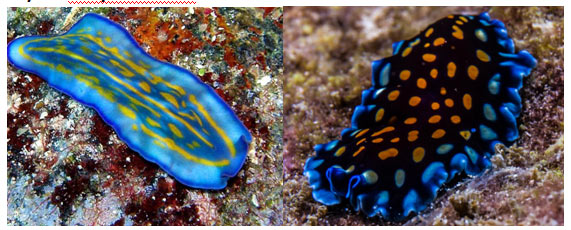- 1. Phylum Platyhelminthes consists of classes.
A. 5
B. 4
C. 6
D. 9
ANSWER: B - 2. which of the following is not a class of Platyhelminthes.
A. Turbellaria
B. Trematoda
C. Cestoda
D. Roundworms
ANSWER: D - 3. There is an incredible power of regeneration in.
A. Aschelminthes
B. Platyhelminthes
C. protozoans
D. Annelids
ANSWER: B - 4. Almost all Platyhelminthes are simultaneous hermaphrodites.
A. Yes
B. No
ANSWER: A - 5. Free-living species of Platyhelminthes usually have a well developed
A. circulatory system
B. Digestive system
C. Excretory system
D. Sensory system
ANSWER: D - 6. which of the following Platyhelminthes have complex lifecycles
A. All species
B. Parasitic species
C. both
D. None of these
ANSWER: B - 7. Platyhelminthes are also known as.
A. Roundworms
B. flatworms
C. Earthworms
D. none of these
ANSWER: B - 8. Parasites generally have less elaborate systems.
A. Yes
B. NO
ANSWER: A - 9. Phylum platyhelminths consist of five classes.
A: Yes
B: NO
ANSWER: B - 10. Some species of Platyhelminthes have _ that captures food and transport it into the mouth.
A. Protrusible Larynx
B. Oesophagus
C. Trachea
D. Protrusiblepharynx
Answer: D - 11._ _ have the first true excretory system
A. Flatworm
B. Cnidaria
C. Mollusks
D. protozoa
Answer: A - 12. Flame cells is the characteristic property of
A. Cnidaria
B. Flatworm
C. Protozoan
D. Mollusks
Answer: B - 13. Flatworm can be herbivores or a scavenge or dead animal a detritus
A. Yes
B. No
Answer: B - 14. waste material od flatworm excrete through a dorsal excretory pore
A. Yes
B. No
Answer: B - 15. Nervous system of flatworm consists of
A. Brain
B. nerve cells
C. transverse cells
D. all
Answer: D - 16. The nervous system of flatworms possess several nerve cords with centralised
A. spinal cord
B. ganglion
C. nerve cord
D. transverse nerve
Answer: B - 17. flame cells are located near the _ of animals
A. thorax
B. abdomen
C. tail
D. head
Answer: D - 18. flame cells have; large cilia in them.
A. Yes
B. No
Answer: B - 19. The flame cells are connected to the body of flatworm by lateral excretory pore
A. Yes
B. No
Answer: A - 20. Class turbellaria of Platyhelminthes consists of
A. Flatworm
B. Flukes
C. Leeches
D. Tapeworm
Answer: A - 21. Toxins include
A. Staurosporine
B. Tetradoxin
C. None
D. Both
Answer: D - 22. Class turbellaria is present in which phylum
A. Annelida
B. Platyhelminthes
C. Echinodermata
D. Protozoa
Answer: B - 23. Tapeworm has defining characteristics-scolex
A. Yes
B. No
Answer: A - 24. Animals of platyhelminths reproduce in the definitive host
A. Yes
B. No
Answer: A - 25. Proglottids in each animal of Platyhelminthes contain
A.1000-2000
B.3000-4000
C.1 million
D.2 million
Answer: B - 26. Staurosporine is also called
A. Potent antibodies
B. Strong insecticides
C. Both
D. None
Answer: C - 27. Tetrodotoxin is also known as
A. Antibiotic
B. Insecticide
C. Paralytic Toxins
D. Cardiac Toxins
Answer: C - 28. Polyclad flatworms store toxins in its tissue
A. Yes
B. No
Answer: A - 29. Tetrodotoxin is a protein
A. Yes
B. No
Answer: B - 30. Fluke body shape resemble with
A. Flatworm
B. Roundworm
C. Leech
D. Earthworm
Answer: C - 31. Which of the following is not present in flukes
A. Well-developed reproductive system
B. Segmented body
C. Gut
D. Suckers
Answer: B - 32. Flukes feeds and grows in
A. Heart
B. Lungs
C. Kidneys
D. All of these
Answer: D - 33. Life Cycle of Trematoda is complex
A. Yes
B. No
Answer: A - 34. Flukes have a poor developed reproductive system
A. Yes
B. No
Answer: B - 35. Parasitic existence is disturbed by
A. Aerobic environment
B. Anaerobic environment
C. Cold environment
D. Hot environment
Answer: B - 36. Adult fluke is present in
A. Liver
B. Heart
C. Blood
D. Intestine
Answer: A - 37. In the Trematoda life cycle inflammation is caused by eggs becoming trapped in host tissue
A. Yes
B. No
Answer: A - 38. Flukes are only internal parasites
A. Yes
B. No
Answer: B

